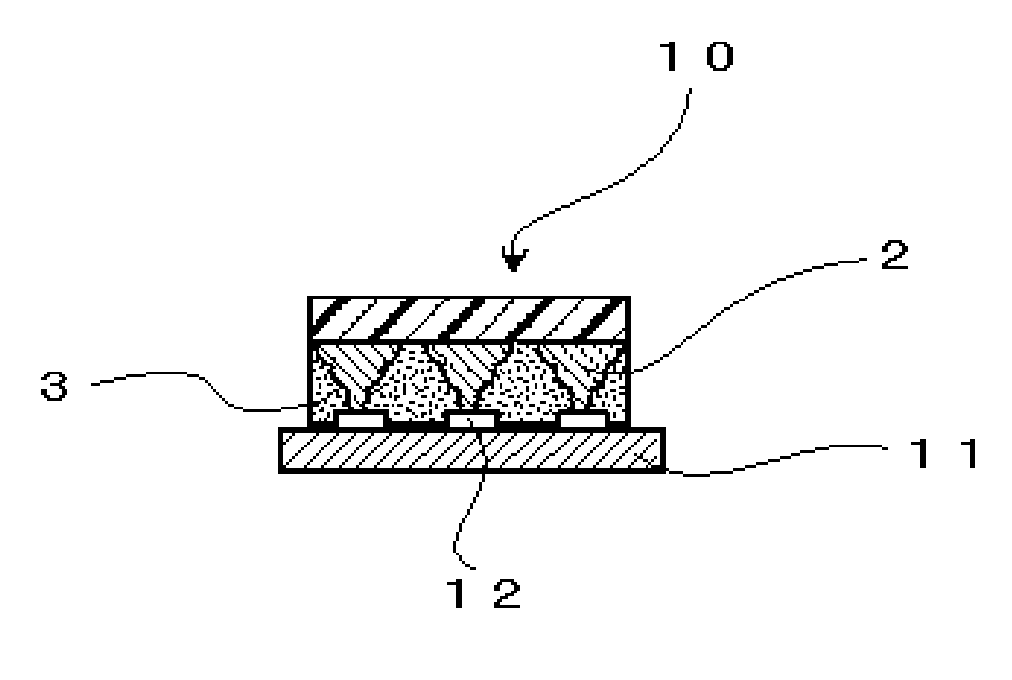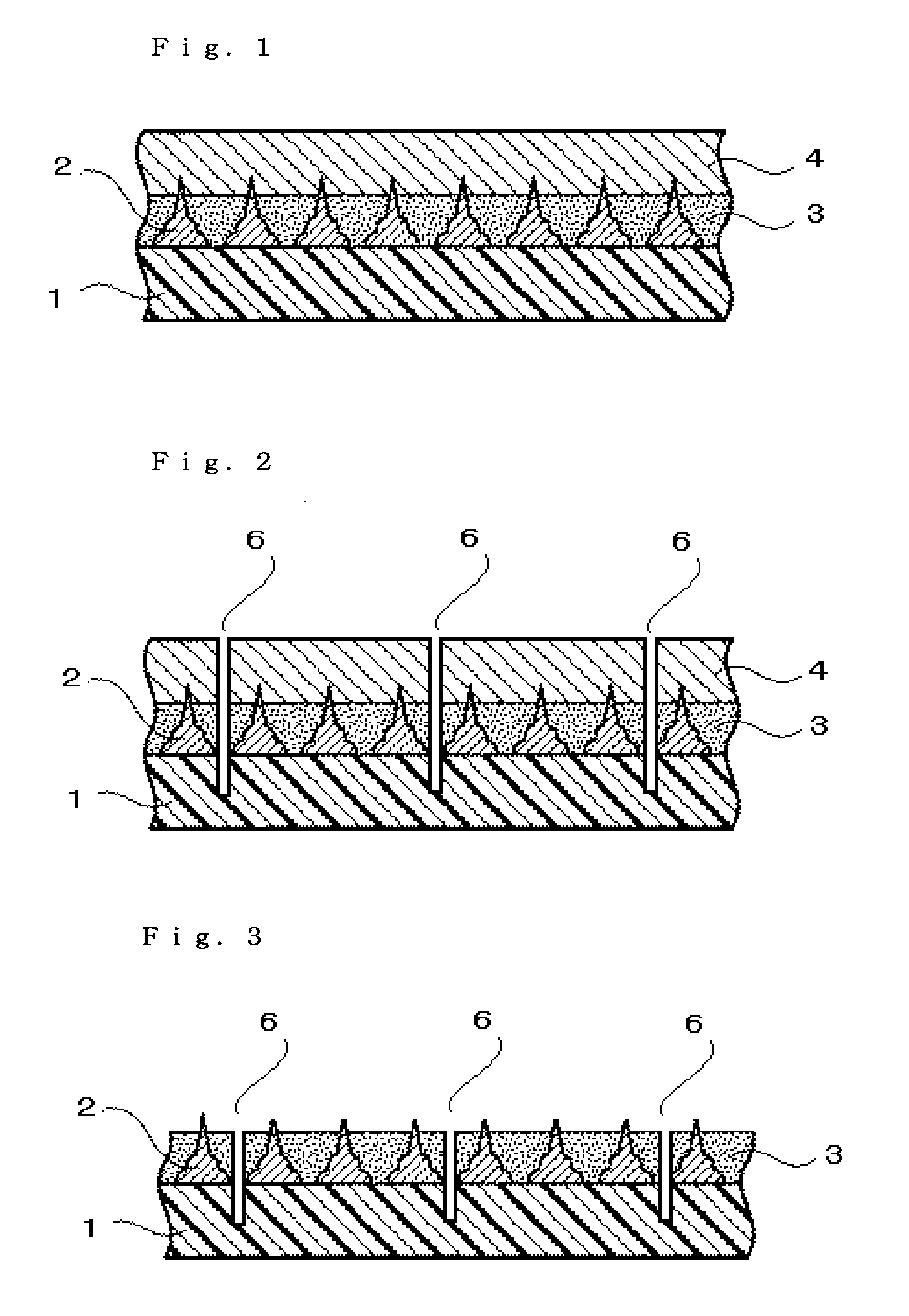Manufacturing Method of Semiconductor Device
a manufacturing method and semiconductor technology, applied in the direction of semiconductor devices, electrical devices, basic electric elements, etc., can solve the problems of complex viscosity control between the lots of the underfill material, joint may brake, and take considerable time, so as to simplify the manufacturing process, improve product quality, and achieve high reliability
- Summary
- Abstract
- Description
- Claims
- Application Information
AI Technical Summary
Benefits of technology
Problems solved by technology
Method used
Image
Examples
example 1
[0112]The adhesive film having the supporting film in which the release film has been removed were laminated to the bump face of the wafer by a rubber laminate roller (rubber hardness 50) with a laminator (RAD 3510 m / 12, manufactured by Lintec Corporation) under the conditions of laminating speed 3 mm / sec and load 3 MPa. Note that, the temperatures of the laminate roller and the table were 25° C.
[0113]The voids produced in the adhesive film while laminating the adhesive film to the wafer were removed ((IP) step), by introducing the wafer laminated with the adhesive film (the stacked body including the adhesive film) into the heat compression device (autoclave under air atmosphere, manufactured by KURIHARA Manufactory Inc.), then heating for 30 minutes at 50° C. under the static pressure of larger by 0.5 MPa with respect to the ambient pressure. The removal of the voids were visually confirmed and evaluated before and after the static pressure application step. The removal of the voi...
example 2
[0120]As similar to the example 1, the adhesive film was laminated to the bump face of the wafer, then without performing the static pressure step, the energy-ray curable resin of the adhesive film was cured.
[0121]After removing the supporting film, the grooves along the circuit of the wafer were formed on the stacked body of the adhesive film and the wafer, by cutting from the adhesive film side using the dicer so that the depth of the grooves is 130 μm from the circuit face of the wafer ((FC) step). Next, the surface protective sheet was laminated on the adhesive film side of the wafer. (Hereinabove (S1) step) Then, the opposite side of the circuit face was ground by using the grinder so that the finished thickness is 100 μm; thereby the wafer was divided together with the adhesive film ((S2) step).
[0122]Next, as similar to Example 1, the group of chips having the adhesive film was transferred to the ultraviolet curable adhesive sheet. After that, the chip having the adhesive film...
example 3
[0126]As similar to Example 2, the chip having the adhesive film was obtained, similarly picked up, and die-bonded to the chip via the adhesive film ((S1) to (S4) and (FC) steps).
[0127]The die-bonded chip mounting substrate (the stacked body including the adhesive film) was introduced into the heat compression device (autoclave manufactured by KURIHARA Manufactory Inc.), and heated under static pressure of larger by 0.5 MPa with respect to the ambient pressure at 120° C. for 60 minutes and followed by heating at 140° C. for 60 minutes in a stepwise fashion to remove the voids and to cure the adhesive film ((IP) and (S5) steps). The removal of the voids was confirmed by applying the static pressure compared to before applying the static pressure. Also, the conductivity and the insulation of the obtained semiconductor device were good.
PUM
 Login to View More
Login to View More Abstract
Description
Claims
Application Information
 Login to View More
Login to View More - R&D
- Intellectual Property
- Life Sciences
- Materials
- Tech Scout
- Unparalleled Data Quality
- Higher Quality Content
- 60% Fewer Hallucinations
Browse by: Latest US Patents, China's latest patents, Technical Efficacy Thesaurus, Application Domain, Technology Topic, Popular Technical Reports.
© 2025 PatSnap. All rights reserved.Legal|Privacy policy|Modern Slavery Act Transparency Statement|Sitemap|About US| Contact US: help@patsnap.com



